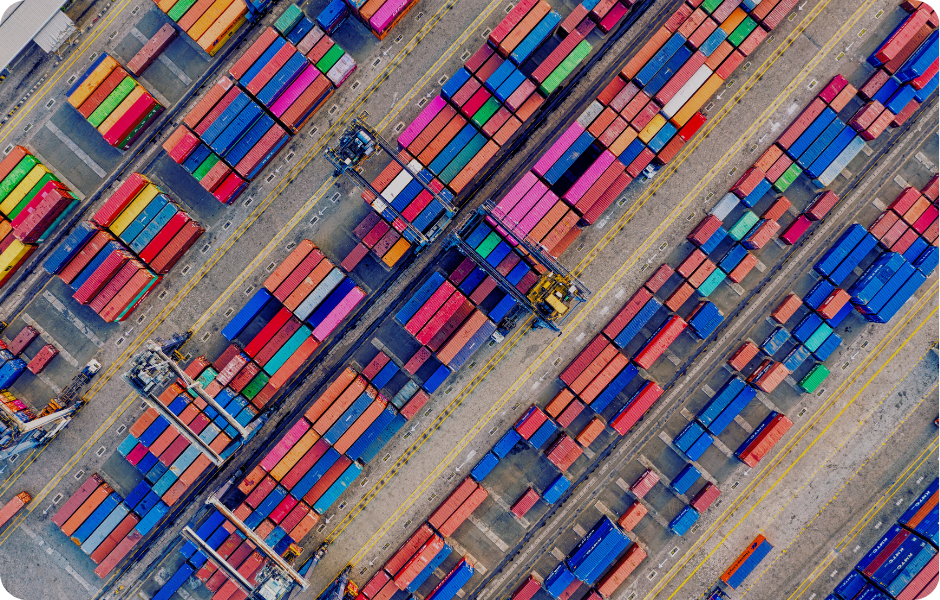
.png)



Recent updates reveal a significant trade deal between the U.S. and its partners, alongside looming tariff escalations and legal uncertainty.
A 15% baseline import tariff has been agreed upon for most goods from the EU and Japan, averting previously threatened rates as high as 30–50% and pushing a major escalation off the table—for now.
If manufacturers and retailers choose not to absorb all of these expenses, this could gradually push up retail prices on a range of goods such as electronics, apparel, and automotive products. This dynamic also poses pressure on shippers navigating altered trade flows, added duties, and the risk of demand fluctuations.
.png)
Forwarders are warning that as ocean spot rates continue to fall across key lanes, particularly on transpacific and Asia–Europe trades, carriers may start introducing surcharges to shore up revenue.
In response, several carriers are limiting capacity for contract bookings—some reducing allocations to just 60% of usual volumes—as they prioritise higher-paying spot cargo. We're anticipating a $500 peak-season surcharge emerging on routes like Asia–North Europe or Asia–Mediterranean if spot rates continue their downward trend.
One notable action: general rate increases (GRIs) in the region of $1,000 to $3,000 per FEU may be deployed but are expected to have limited effectiveness given current weak demand.
Summary:
If port operations remain constrained even briefly, schedules for inbound and outbound container traffic may experience cascading adjustments.
A powerful magnitude 8.8 earthquake struck off Russia’s Kamchatka Peninsula—the sixth-largest quake ever recorded—triggering tsunami warnings across vast areas of the Pacific. Alerts have been issued from Hawaii and the US West Coast to Ecuador and Japan, with port authorities in some regions already instructing vessels to move offshore as a precaution.
While the direct hit was local, the ripple effects—especially any delay or temporary port shutdowns in Japan—could feed into alignment and timing at Asian transshipment hubs. If Japanese port operations remain constrained even briefly, schedules for container traffic may experience cascading adjustments.
While the full extent of the impact on port infrastructure and schedules is still developing, disruption is likely to ripple across transpacific lanes. Any congestion or delays at major Pacific gateways often carry knock-on effects, particularly where Asia–US routes feed into global transshipment hubs. As always, the situation remains fluid and is being closely monitored.
.png)
Container lines serving routes from India are now applying additional surcharges on containers that exceed standard weight limits. Once a shipment’s verified gross mass surpasses set thresholds, an Overweight Freight Surcharge (OWS) is triggered. The surcharges apply to outbound shipments from the Indian subcontinent, Arabian Gulf, and surrounding regions, with rates varying depending on destination and carrier.
This move reflects growing concern over safety, fuel efficiency, and vessel capacity planning, particularly on trade lanes that are already experiencing tight space and strong demand. With weight distribution becoming an increasingly important operational consideration, especially in transhipment-heavy networks, shippers may need to factor in these additional costs as part of their planning and budgeting.
A newly signed UK–India trade agreement is set to create significant opportunities for British exporters and supply chain operators. With tariffs on key UK goods—like whisky, dairy, consumer products, and machinery—reduced from an average of 15% to as low as 3%, UK exporters will find it more competitive to access the fast-growing Indian market.
The deal also opens up access to over £38bn worth of Indian government procurement contracts, creating fresh avenues for service providers across logistics, infrastructure, and tech. As bilateral trade volumes grow, pressure on freight and logistics capacity—particularly on UK outbound lanes—could increase, making agile planning and reliable booking tools essential.
While some tariff phase-outs will be gradual and require careful compliance, the agreement provides a welcome sense of stability and investment confidence at a time of wider global uncertainty.
Cargo rates from Vietnam to the U.S. have surged by approximately 15–20%, reflecting tight capacity and rising demand.
Vietnam is experiencing a sharp rise in export volumes, particularly in air cargo destined for the U.S., which has increased by 62% year-on-year. This surge in demand has driven freight rates up by around 15–20%, highlighting a growing strain on available capacity.
The country’s domestic airfreight fleet is under pressure, and without significant investment in additional lift or infrastructure, Vietnam risks ceding ground to international carriers. In response, airlines and freight forwarders are expanding their services, but the imbalance between demand and capacity remains a key challenge for the market.
Did you know:
We have a dedicated team on the ground at London Heathrow to help with your Air Freight queries. Speak to our experts today.

.png)
